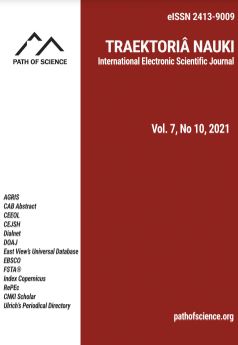Prevalence of Improvised Explosives Devices and Related Terrorist Attacks in Garissa County, Kenya (2017-2021)
Prevalence of Improvised Explosives Devices and Related Terrorist Attacks in Garissa County, Kenya (2017-2021)
Author(s): Samson Njeru Mwinga, Xavier Francis IchaniSubject(s): Regional Geography, Security and defense, Studies in violence and power, Present Times (2010 - today), Peace and Conflict Studies
Published by: Altezoro, s. r. o. & Dialog
Keywords: Improvised explosive device; Garissa County; Kenya; security agencies; prevalence; IED attacks; counter IED preparedness;
Summary/Abstract: There has been a steady rise in the prevalence and frequency of improvised Explosives Devices (IED) to execute terror attacks in Kenya in the recent past. This has resulted in increased loss of lives and massive property destruction, among other negative impacts of terrorism. The purpose of this article was to ascertain the prevalence of IEDs; hotspots, targets of attack, the distribution of the attacks over the years and the geolocations of deployed IEDs and related terrorist attacks in Garissa County, Kenya. The target population was serving members of the National Police Service (NPS), civil society organizations (CSO), national government administrative officers (NGAOs) and members of the local community. The researcher adopted a descriptive survey research design. Mixed sampling methods were adopted. Stratified sampling was used to cluster members of NPS, according to their Services which include: Kenya Police, Administration Police and Directorate of Criminal Investigation. Purposive sampling was used to select Sub-counties for the study and identify critical informants from CSO, NGAO and members of local communities. Questionnaires, Focus Group Discussions and key informants' interviews guides were used to collect both quantitative and qualitative data. Quantitative data was analyzed by the use of simple descriptive statistics like percentages, frequencies. In contrast, qualitative data were analyzed using open coding to generate themes that the researcher analyzed using thematic analysis. The results were presented using tables, pie charts, bar graphs, and narratives. The study observed that Garissa County, Kenya, had not been spared by the brunt of the IED menace mainly orchestrated by Al-Shaabab terrorist group. The study further noted that IEDs kill thousands every year, inflict grievous physical injuries, cause dire psychological harm, spread extreme fear, and disrupt communal economic activities. IEDs mainly target security forces and critical national infrastructure members, and most often than not, civilian casualties have been reported. Moreover, IEDs are relatively cheap and easy to assemble. They can also be assembled anywhere and from various materials, including commercial explosives used in construction, mining, and manufacturing. Therefore, the study will add practical value to the Kenya security agencies security operations preparedness body of knowledge. This is expected to guide them in developing effective and efficient Counter IED policies, strategies, and guidelines to enhance the efforts to combat this security menace.
Journal: Traektoriâ Nauki
- Issue Year: 7/2021
- Issue No: 10
- Page Range: 1001-1009
- Page Count: 9
- Language: English

